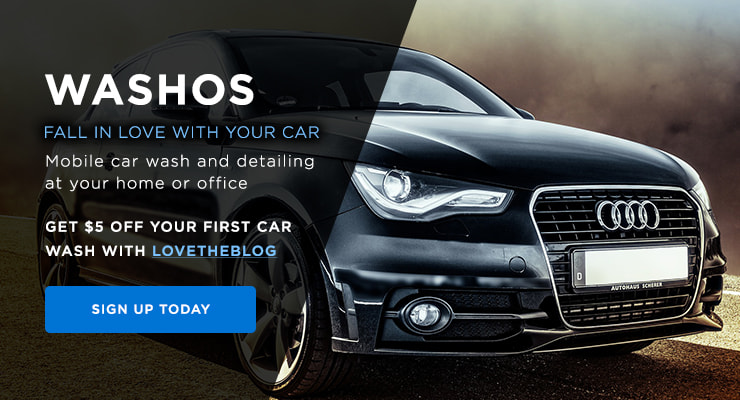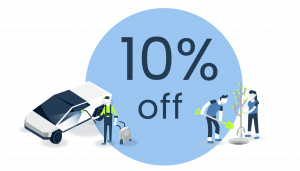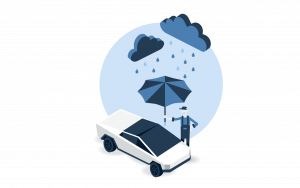At Washos, we know all about the ongoing drought in California and restrictions placed on water usage. We take pride in offering a waterless car wash as our default option. Not only is it good for the environment but it also produces the same results as a water based wash.
Here’s the deal…
You’ve probably heard about a waterless car wash or a spray on car wash or a dry car wash, but you have absolutely no idea what it is! In this post, we will cover the basics of a waterless car wash, the results you can achieve and how you can wash your car at home with minimal water use.
Follow along!
I. What is a Waterless Car Wash?
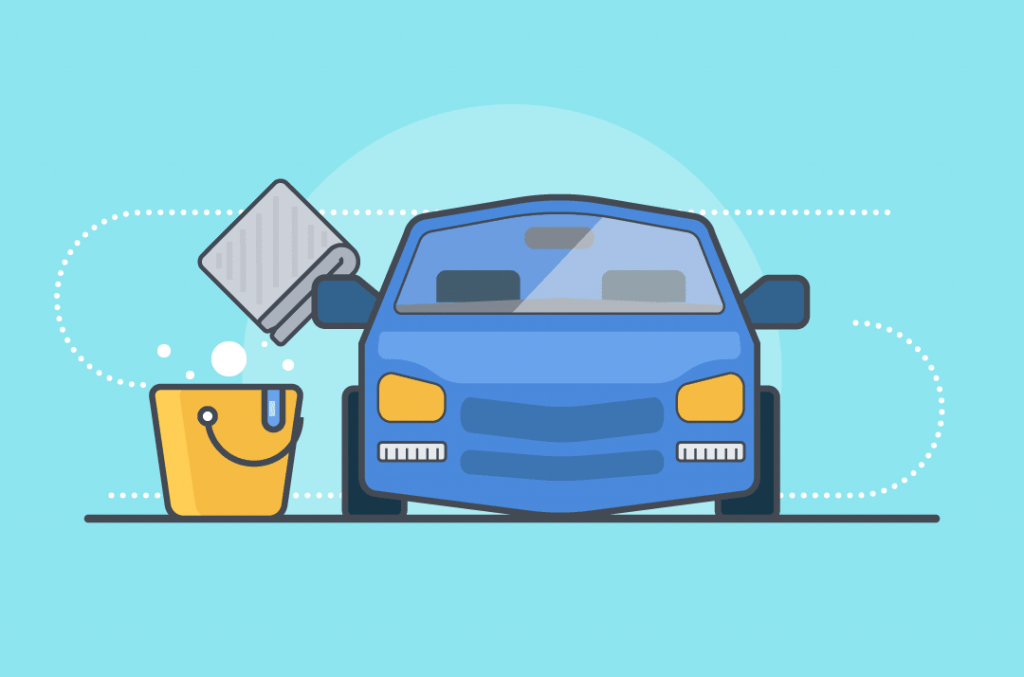
A waterless car wash is an eco-friendly and efficient car wash that uses little or no water. Sometimes it is also known as a spray on car wash or no water car wash.
This is the best part
It also allows the car detailer to service your car in narrow spaces while saving surprising amounts of water.
Waterless products are more advanced than regular soap used for a mobile car wash as they need to compensate for the lack of water. Thus, the efficiency of the waterless car wash is usually better than using water-based methods. Plus, when doing a waterless car detailing, you only need a bucket of water to rinse your towels instead of using between 50 to 100 gallons of clean water when using a pressure washer or a hose.
II. How does a Waterless Car Wash work?
A waterless car wash uses high lubricity sprays to polish and wash the vehicle’s bodywork. The spray’s high lubricity chemicals encapsulate dirt and dust particles. This process is similar to how water removes dirt, but the chemical combination of a waterless car wash product is more efficient.
You have to simply spray the surface of the car and then wipe it off. This process removes any light dirt or stains from the car’s surface. It works ideally for cars that don’t have thick dried mud to clean. A waterless car wash is only recommended for cars with light dirt.
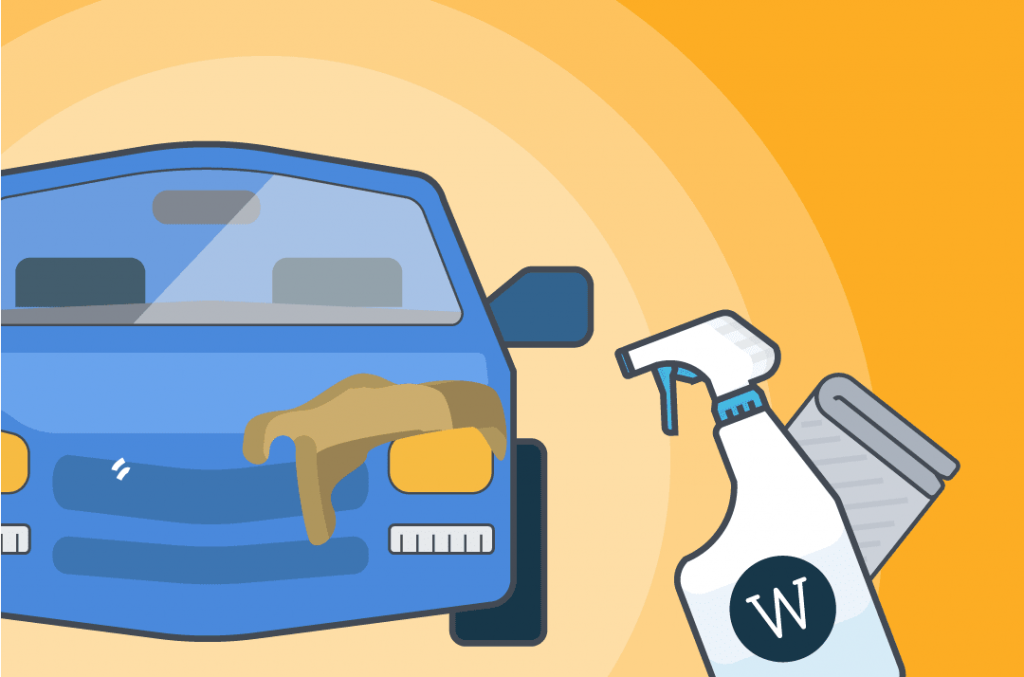
Wiping down your car with a waterless car wash spray is advised by any auto detailer as water can sometimes hurt your bodywork and leave marks if you go about it the wrong way. However, you have to have a good soft microfiber towels to wipe the car.
A microfiber towel is used because of high absorbency and softness, which helps to scoop up these dirt particles.
If the waterless car wash product is used correctly, it will not damage or scratch your car’s paint.
III. Environmental Impact of a Waterless Car Wash
Most corner car washes use vast quantities of water as they drown the bodywork in water and soap to remove as much dirt as possible (and as fast as possible!).
This is how much water is used to wash a sedan:
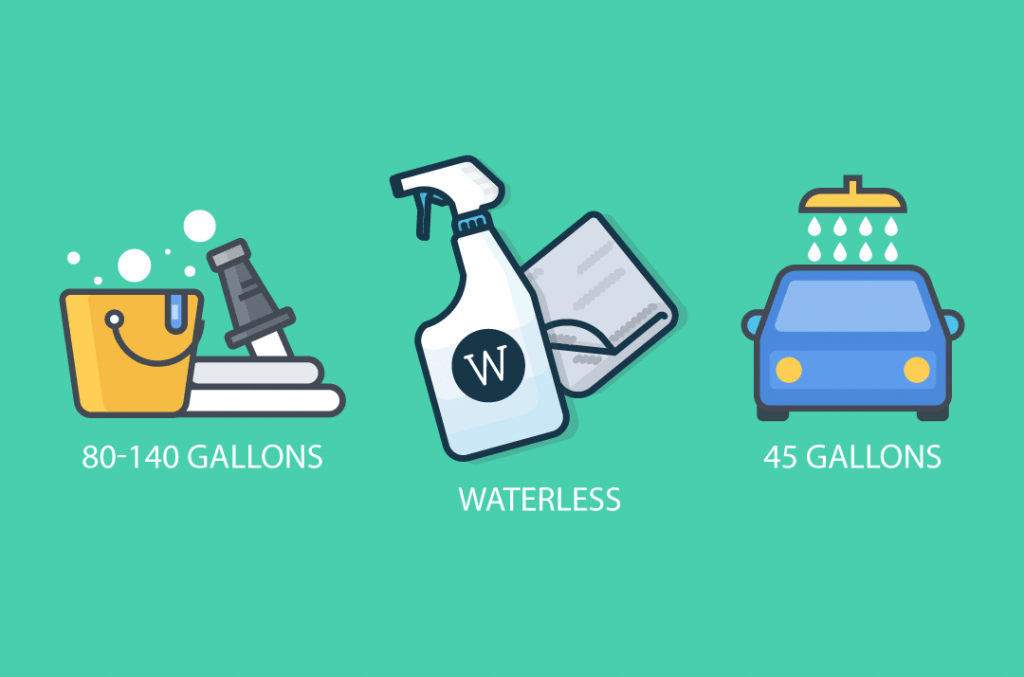
A commercial car wash
Most commercial car washes use up to 45 gallons of water per wash. However, car washers reclaim most of that water.
A Waterless car wash
Want to know the best part?
A waterless car wash just requires 4 – 6 oz of waterless car wash formula used per car and a couple of buckets of water. In the cases where the car is caked in mud, you require an additional gallon of water.
IV. Waterless Car Wash Products
Most professional mobile detailers use homemade products by mixing different type of high lubricity sprays. We strongly advise you not to do so unless you are a car detailing expert.
You are better off buying a gallon of waterless car cleaner. The waterless car cleaner product will cost you approximately $30 and will allow you to wash your car 5 or 6 times. There are many popular car care brands like Meguiar’s, Chemical Guys and 3D Auto Detailing Products that sell high-quality ready to use waterless car wash products.
While at Washos, we use a proprietary waterless car wash formula, our research has concluded that Meguiar’s Behind Wash & Wax Anywhere is one of the best premium waterless car wash sprays around. For a less expensive waterless car wash product, we recommend the Triplewax Waterless Wash & Shine.
V. Waterless Car Wash Review
If you’re looking for a simple car wash to remove the visible dirt, a waterless car wash works perfectly fine. However, if you get thick embedded dirt on your vehicle, it might sometimes be better to apply a small quantity of water on those areas so that you don’t use too much cleaner to soften the dirt. If you follow the steps correctly, then you will not damage the paint of your car.
If you want to use wax or to go up to the clay bar treatment, preparing your car with waterless car wash solution is better. If you use water, you would have to dry the car very well using specific equipment or let the vehicle dry under a hot sun. Residues of water on your can be harmful when applying car wax or polish.
Tip: If you’re still going for a water-based car wash, then do it on some grass! That way spilled water will at least be useful for something.
VI. How to do a Waterless Car Wash Yourself [Step-by-Step Guide]
To do a waterless car wash yourself at home, you will need many clean microfiber towels and a ready to use waterless car wash product. We recommend using microfiber towels with a minimum weight of 300 GSM (grams per square meter). A low quality or dirty towel can damage your car.
If your car has excessive mud, we recommend a rinse. A waterless car wash solution will not be effective against caked mud.
Follow our step-by-step guide to getting your car shiny in no time!
Step 1
Start by taking a microfiber towel and folding it twice in half to create eight useable sides. Remember that we use a microfiber towel because it offers high absorbency and softness, which helps to scoop up these dirt particles.
Note: We highly recommend making sure the towels are clean before using them. You can read our Microfiber Towel guide on how to clean your microfiber cloth.
Step 2
Mentally split up your car into different sections that you can work on at a time.
- The side glass
- The roof
- The hood and trunk
- The side doors (upper half)
- The front bumper
- The rear bumper
- The lower half of the side doors
- The wheels
You will want to use different microfiber clothes for different sections of the car. Stop using a cloth if it becomes too dirty or accumulates particles. Incorrectly using a microfiber towel can cause scratches on your vehicle. Never reuse a dirty microfiber without washing it first.
Step 3
Usually, car detailers start at the top of the car to avoid spilling when using products on the roof.
Simply spray the waterless car wash product onto one folded cloth and onto a panel of the vehicle, gently wipe with leading cloth. And quickly buff using a second clean and dry microfiber cloth.
Step 4
Wipe lightly in one direction. Wipe the bodywork gently without applying too much pressure. Don’t go circles or you’ll just end up keeping the dirt on the car. We recommend wiping linearly in the direction of the wind.
Step 5
When the towel gets too dirty, use one of the other clean sides. The idea of using a clean side every time is not to reintroduce the dirt on the car. Repeat this process as you clean the other parts of your vehicle. We recommend using a separate microfiber towel for the brakes since the brake pads may contain chemical fluids.
Conclusion
We believe that waterless car washes are the future. Encourage your local washer and detailer to wash your car without water and see the incredible results for yourself!
We are committed to being eco-friendly, and for that reason, all of our car detailers do a waterless car wash and waterless car detailing by default.
Whether you need an interior detailing, a full exterior detailing, a tree sap removal or a water spots treatment, our waterless mobile detailing will restore your car to its original condition.
Try Washos
